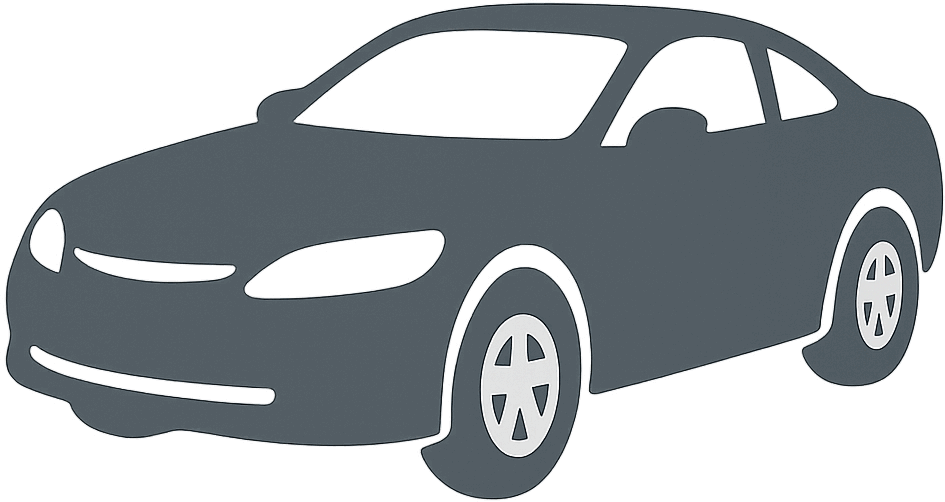 1980 Mitsubishi Sapporo II (A16_A) Dimensions, Size & Specs
1980 Mitsubishi Sapporo II (A16_A) Dimensions, Size & Specs
Measurements of the 1980 Mitsubishi Sapporo II, engineered for optimal performance and comfort
| Tire Specifications | |
|---|---|
| Rims Size: |
|
| Tire Size: |
|
The Mitsubishi Sapporo II (A16_A), produced from 1980 to 1984, is a classic Japanese coupe that combines style and performance from the early 1980s era. This generation of the Sapporo was designed to offer a sportier driving experience with a two-door coupe body style that appealed to enthusiasts of compact and mid-size sporty cars. Featuring 14-inch rims paired with 185/70 R14 tires, the Sapporo II was equipped to balance traction and ride comfort effectively. While specific exterior dimensions for this generation are less commonly referenced, the 14-inch wheel size and tire profile indicate a vehicle size typical for coupes of the period, offering nimble handling with a moderate footprint. The Sapporo II’s coupe configuration enhances its sporty character, delivering an engaging ride in a relatively lightweight package. Overall, the Mitsubishi Sapporo II stands as a notable classic compact coupe of its time, remembered for its blend of Japanese engineering and sporty styling cues, making it a popular choice among vintage car collectors and Mitsubishi enthusiasts alike.
Discover the standout features that make the 1980 Mitsubishi Sapporo II a leader in its class
Have a question? Please check our knowledgebase first.
The 1980 Mitsubishi Sapporo II (A16_A) coupe measures approximately 4,460 mm (175.6 inches) in length, 1,670 mm (65.7 inches) in width, and 1,320 mm (51.9 inches) in height. These compact dimensions contribute to the car's sporty coupe profile and aid in city maneuverability and parking. Its relatively low height enhances aerodynamic performance and handling characteristics, while the width provides stability on the road.
The curb weight of the 1980 Mitsubishi Sapporo Sapporo II (A16_A) is approximately 1,130 kg (2,492 lbs). This moderate weight for a coupe from that era strikes a balance between agility and stability. The relatively lightweight structure supports responsive handling and acceleration, while still maintaining enough mass for road grip and ride comfort. This makes the Sapporo II agile for spirited driving yet stable enough for comfortable highway cruising.
The Mitsubishi Sapporo II (A16_A) from 1980 typically comes equipped with 14-inch rims paired with 185/70 R14 tires. These tire and rim dimensions provide a good balance between ride comfort and sporty handling. The 185 mm width tires increase road contact for better traction, while the 70 aspect ratio allows for some sidewall flex, improving ride quality without sacrificing cornering ability. This setup is well-suited for the coupe’s sport-oriented driving character.
Compared to its predecessor, the first-generation Mitsubishi Sapporo, the second-generation Sapporo II (A16_A) features subtle changes in dimensions, aiming to refine its sporty appeal and cabin space. The Sapporo II generally retains a similar length around 4,460 mm but may have marginally increased width or a lowered height to enhance aerodynamics and styling. These adjustments make the Sapporo II feel more modern and agile while preserving the coupe’s compact footprint.
The 1980 Mitsubishi Sapporo II offers a tight but driver-focused interior typical for sport coupes of its era. While exact interior dimensions vary, the cabin comfortably seats four with two front bucket seats and a small rear bench. Headroom and legroom in the front are sufficient for average-height adults, though rear seating space is limited and best suited for shorter trips or smaller passengers. The coupe design places more emphasis on front-seat comfort and driving engagement.
Yes, the Mitsubishi Sapporo II (A16_A), with its length of approximately 4,460 mm (175.6 inches), is compact enough to fit comfortably in a standard residential garage. Typical garages are around 5 to 6 meters (16.4 to 19.7 feet) deep and 2.5 to 3 meters (8.2 to 9.8 feet) wide, so the Sapporo's dimensions make it easy to park without difficulty. Its moderate width and relatively low height also contribute to hassle-free garage storage without risking damage.
The Mitsubishi Sapporo II was competitively sized against other 1980s sporty coupes, such as the Toyota Celica and Datsun 280ZX. With a length around 4.46 meters and a width of 1.67 meters, the Sapporo II was slightly more compact than some rivals, which ranged from about 4.5 to 4.7 meters in length. This smaller size gave it a nimble driving characteristic, while still offering sufficient space and sporty proportions typical of coupes in its segment during the early 1980s.
The Mitsubishi Sapporo II offers a ground clearance typical for sporty coupes of its time, roughly around 140 mm (5.5 inches). This modest clearance contributes to better handling and a lower center of gravity but requires some caution when driving over speed bumps or uneven terrain. For daily urban and suburban use, this clearance is generally sufficient, providing a comfortable ride while maintaining the sporty driving dynamics expected from the coupe.
The Mitsubishi Sapporo II (A16_A) was equipped with a range of efficient engines typical for early 1980s coupes, commonly featuring inline-four or V6 engines displacing between 1.6 to 2.0 liters. These engines were paired with manual and automatic transmission options, including a 5-speed manual and a 3- or 4-speed automatic gearbox depending on the market and trim level. The combination focused on a blend of sporty performance and daily drivability.
Cargo capacity in the Mitsubishi Sapporo II is limited, as is typical for compact sport coupes of the early 1980s. The trunk space generally measures around 250-300 liters (8.8-10.6 cubic feet), enough for everyday errands or short trips but less than what larger sedans or hatchbacks offer. When compared to similar coupes like the Toyota Celica or Nissan 280ZX, the Sapporo’s cargo capacity is competitive, balancing sporty design with modest practicality.
